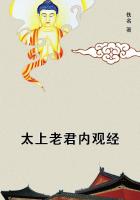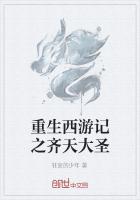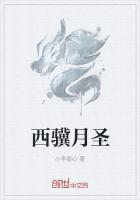The transformation of the homogeneous into the heterogeneous thus displayedin the separation of Painting and Sculpture from Architecture and from eachother, and in the greater variety of subjects they embody, is further displayedin the structure of each work. A modern picture or statue is of far morecomplex nature than an ancient one. An Egyptian sculpture-fresco representsall its figures as on one plane -- that is, at the same distance from theeye; and so is less heterogeneous than a painting that represents them asat various distances. It exhibits all objects as similarly lighted; and sois less heterogeneous than a painting which exhibits different objects, anddifferent parts of each object, as in different degrees of light. It usesscarcely any but the primary colours, and these in their full intensities;and so is less heterogeneous than a painting which, introducing the primarycolours but sparingly, employs an endless variety of intermediate tints,each of heterogeneous composition, and differing from the rest not only inquality but in strength. Moreover, these earliest works manifest great uniformityof conception. In ancient societies the modes of representation were so fixedthat it was sacrilege to introduce a novelty. In Egyptian and Assyrian bas-reliefs,deities, kings, priests, attendants, winged-figures and animals, are in allcases depicted in like positions, special to each class, holding like implements,doing like things, and with like expression or non-expression of face. Ifa palm-grove is introduced, all the trees are of the same height, have thesame number of leaves, and are equidistant. When water is imitated, eachwave is a counterpart of the rest; and the fish, almost always of one kind,are evenly distributed. The beards of the Assyrian kings, gods, and winged-figures,are everywhere similar; as are the manes of the lions, and equally so thoseof the horses. Hair is represented throughout by one form of curl. The king'sbeard is built up of compound tiers of uniform curls, alternating with twistedtiers placed transversely and arranged with perfect regularity; and the terminaltufts of the bulls' tails are represented in exactly the same manner. Withouttracing out analogous traits in early Christian art, in which, though lessstriking, they are still visible, the advance in heterogenity will be sufficientlymanifest on remembering that in the pictures of our own day the compositionis endlessly varied; the attitudes, faces, expressions, unlike; the subordinateobjects different in size, form, position, texture. Or, if we compare anEgyptian statue, seated upright on a block, with hands on knees, fingersoutspread and parallel, eyes looking straight forward, and the two sidesperfectly symmetrical, with a statue of the advanced Greek or the modernschool, which is asymmetrical in respect of the position of the head, thebody, the limbs, the arrangement of the hair, dress, appendages, and in itsrelations to neighbouring objects, we see the change from the homogeneousto the heterogeneous clearly manifested. §125. In the co-ordinate origin and gradual differentiation of Poetry,Music, and Dancing, we have another series of illustrations. Rhythm in speech,rhythm in sound, and rhythm in motion, were in the beginning, parts of thesame thing. Among existing barbarous tribes we find them still united. Thedances of savages are accompanied by some kind of monotonous chant, the clappingof hands, the striking of rude instruments: there are measured movements,measured words, and measured tones; and the whole ceremony, usually havingreference to war or sacrifice, is of governmental character. The early recordsof the historic races similarly show these three forms of metrical actionunited in religious festivals. In the Hebrew writings we read that the triumphalode composed by Moses on the defeat of the Egyptians, was sung to an accompanimentof dancing and timbrels. The Israelites danced and sung "at the inaugurationof the golden calf. And as it is generally agreed that this representationof the Deity was borrowed from the mysteries of Apis, it is probable thatthe dancing Was copied from that of the Egyptians on those occasions."There was an annual dance in Shiloh on the sacred festival; and David dancedbefore the ark. Again, in Greece the like relation existed: the originaltype being there, as probably in other cases, a simultaneous chanting andmimetic representation of the achievements of the god. The Spartan danceswere accompanied by hymns; and in general the Greeks had "no festivalsor religious assemblies but what were accompanied with songs and dances"-- both of them being forms of worship used before altars. Among the Romans,too, there were sacred dances: the Salian and Lupercalian being named asof that kind. Even in the early Christian church, dances in the choir atfestivals, occasionally led by bishops, were among the forms of worship,and in some places continued down to the 18th century. The incipient separationof these once united arts from each other and from religion, was early visiblein Greece. Probably diverging from dances partly religious, partly warlike,as the Corybantian, came the war-dances proper, of which there were variouskinds; and from these resulted secular dances. Meanwhile Music and Poetry,though still joined, came to have an existence separate from dancing. Theprimitive Greek poems, religious in subject, were not recited but chanted;and though at first the chant of the poet was accompanied by the dance ofthe chorus, it ultimately grew into independence. Later still, when the poemhad been differentiated into epic and lyric -- when it became the customto sing the lyric and recite the epic-poetry proper was born. As, duringthe same period, musical instruments were being multiplied, we may presumethat music came to have an existence apart from words. And both of them werebeginning to assume other forms than the religious. Facts having like implicationsmight be cited from the histories of later times and peoples: as the practicesof our Anglo-Saxon "gleemen" and Celtic bards, who sang to theharp heroic narratives versified by themselves to music of their own composition: thus uniting the now separate offices of poet, composer, vocalist, and instrumentalist.
同类推荐
热门推荐
诱婚成瘾:总裁太凶猛
她美丽聪明,有一颗坚韧的心;可是命运总是喜欢捉弄她,在错的时间遇到错的人;她为了他的幸福,潇洒退出过自己的生活;可是才躲开一只,怎么又来一只?她只是好过平静的生活好不好?他冷漠睿智,优雅尊贵,是叱咤风云的天之骄子,从来都不认为会被哪个女人拴住;在她以为她在对的时间遇到对的人时,他却无情的伤她一次又一次。忍无可忍,她决定离开。














